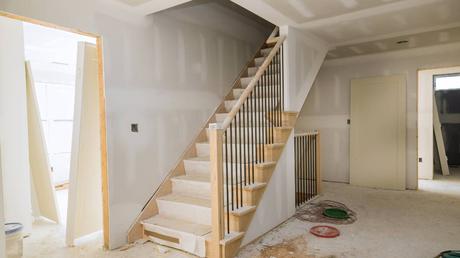
Last Updated on March 27, 2024 by Kravelv
Are you tired of living in an outdated home? It's time to transform your space with a whole house remodeling in Annandale, VA.
In the beautiful town of Annandale, homeowners are turning to kitchen and bathroom remodels. From enhancing curb appeal to creating interior design, this remodeling can improve your house.
What is a Home Remodeling?
When undergoing a remodeling project, both the design and the structure of a space are modified. Essentially, if you make changes to your home beyond routine maintenance tasks, it falls under the home remodeling category.
Common reasons for doing home remodels include:
- Modernization
- Personal taste preferences
- Addressing safety concerns
- Increasing energy efficiency
- Adapting to lifestyle changes
- Preparing a home for sale
For example, while remodeling your kitchen, you can choose to open up the space by combining the kitchen and the living room. Alternatively, you may want to add a kitchen island to make cooking more practical.
With a well-executed remodeling project, homeowners can enjoy improved comfort and convenience.
Best Practices for Home Remodeling
A complete home remodeling project can be overwhelming. However, following best practices will help ensure a successful outcome.
Consider these best practices for a whole home remodeling project:
Identifying outdated areas
Assessing your present home is the first step in starting an entire home renovation project. This will help determine which parts require renovations due to their condition.
Take a walk through your house and make note of any features or elements that no longer meet your needs. Think about how you can improve the layout and maximize the use of space. This could include outdated kitchen cabinets, worn-out flooring, or old-fashioned family room fixtures.
Once you have identified the areas that require attention, prioritize them based on budget constraints. It's important to understand your goals and vision for your remodeled home clearly.
Setting a budget
Without a clear budget, it's easy to overspend and end up with an incomplete project.
Before you start any work, take the time to carefully consider your financial situation. Additionally, determine how much you are willing and able to invest in your remodel.
Moreover, create a detailed budget with categories for labor, materials, permits, and unexpected costs. Consulting a contractor can help with accurate estimates and budgeting guidance.
Hiring a professional remodeling contractor
Hiring a pro remodeler guarantees success in a whole-house remodel. Professional remodelers possess assessment, permit acquisition and execution abilities.
Other benefits of engaging a professional remodeler:- Save money, time, and effort due to the proficient handling of the renovation process
- Reduced anxiety since experts navigate challenges skillfully
- Quality output backed by training, know-how, and connections
That's why looking for subcontractors and suppliers is best to ensure top-notch results. Here are ways to hire a remodeling contractor:
- Seek referrals from trusted sources who've had recent relevant projects.
- Verify licensure, insurance, and stellar industry standing.
- Meet prospective contractors personally to gauge compatibility.
- Ask for client testimonials and samples of previous work.
- Query experience level, project schedule, and communication protocols.
Designing your new space
Designing your new space is one of the most exciting parts of a house renovation and remodeling project. It's an opportunity to let your personal style shine and create a home that truly reflects who you are.
When creating a modern look, there are a few key design principles to keep in mind.
- First, focus on clean lines and simplicity. Modern design is characterized by minimalism and a sense of openness. Avoid clutter and excessive ornamentation, and opt for sleek and streamlined furniture and fixtures. Choose a neutral color with pops of bold colors or patterns to create visual interest.
- Next, consider the use of natural light. A light can make a space feel lighter and more inviting. Maximize the amount of natural light in your home by choosing large windows, skylights, or glass doors. If privacy is a concern, use frosted window or door treatments that allow light to pass through while maintaining privacy.
- Lastly, use sustainable and eco-friendly materials. When remodeling, think about utilizing resources like bamboo, recycled wood, or repurposed glass. These materials give your house a distinctive and contemporary look in addition to being beneficial for the environment.
Pro Tip: Avoid trends that may quickly go out of style and instead choose pieces that will stand the test of time. Invest in long-lasting, high-quality furniture and accessories for your home remodel projects.
Choosing the right materials and finishes
Choosing the right materials is important when it comes to a whole house remodeling project. The finishes you choose will impact not only your home's overall look and feel but also its durability and functionality.
Here are a few tips to help you make the right choices.
- Consider the durability of different materials.
- Think about the style and aesthetic of your home.
- Consider the environmental impact.
- Incorporate different textures and patterns.
- Don't be afraid to mix and match different materials and finishes to create a customized space.
Parting Thoughts
Whole home renovations and remodels present a chance to optimize energy efficiency. Evaluate the budget, seek expert opinions, and select suitable methods.
Don't let an old, outdated house keep you from living your best life. Get ready to turn your dreams of a modern and stylish home into a reality.
